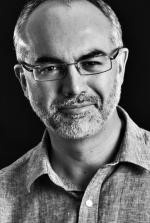Why do we age? Human disease genes and natural selection

Arcadi Navarro
ICREA and Universitat Pompeu Fabra, Barcelona arcadi.navarro@upf.edu
(Talk in English)
Senescence, the process of organismic decay with ageing, is a public health challenge and a fascinating evolutionary problem. There is neither a universally accepted theory for its ultimate causes, nor a consensus about what may be its impact on human health. We tested the two most well-known evolutionary explanations of senescence, mutation accumulation and antagonistic pleiotropy, which postulate that genetic variants with harmful effects in old ages can be tolerated by natural selection, or even favored by it at early ages. We studied the effects of genetic variants associated with diseases appearing at different periods in life, when they are expected to have different impacts on fitness and observed that data fit theoretical expectations. Namely, we observe higher risk allele frequencies combined with large effect sizes for late-onset diseases; we also detect a significant excess of early-late antagonistically pleiotropic variants which, strikingly, tend to be harbored by ageing-related genes. Beyond providing the first systematic, genome-wide evidence for evolutionary theories of senescence in our species and shedding new light on the long-standing question of whether senescence is the result of adaptation; our approach has the potential of revealing a plethora of unexpected relationships between previously unrelated pathologies.
Recent publications:
Lappalainen et al. 2015. The European Genome-phenome Archive of human data consented for biomedical research. Nature Genetics 47: 692–695.
Santpere et al 2015. Analysis of five gene sets in chimpanzees suggests decoupling between the action of selection on protein-coding and on non-coding elements. Genome Biology and Evolution 7: 1490-1505.
Olald et al 2014. Derived Immune and Ancestral Pigmentation Alleles in a 7,000-Year-old Mesolithic European. Nature 507, 225-228.
Contact: Ana Rivero; ana.rivero@cnrs.fr
Contact du Comité SEEM: seem@services.cnrs.fr. Contact du Labex CEMEB: gestion.cemeb@univ-montp2.fr, www.labex-cemeb.org.


